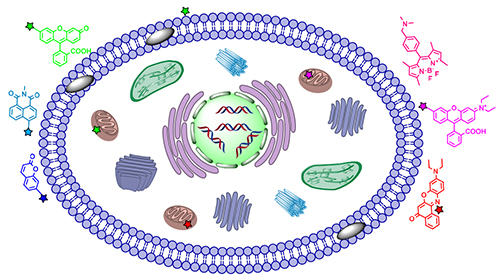[1] Motterlini, R.; Otterbein, L. E. Nat. Rev. Drug Discovery 2010, 9, 728.
[2] Sjöstrand, T. Scand. J. Clin. Lab. Invest. 1949, 1, 201.
[3] Muramoto, T.; Tsurui, N.; Terry, M. J.; Yokota, A.; Kohchi, T. Plant Physiol. 2002, 130, 1958.
[4] Muramoto, T.; Kohchi, T.; Yokota, A.; Hwang, I.; Goodman, H. M. Plant Cell 1999, 11, 335.
[5] Xuan, W.; Zhu, F.-Y.; Xu, S.; Huang, B.-K.; Ling, T.-F.; Qi, J.-Y. Plant Physiol. 2008, 148, 881.
[6] Han, Y.; Xuan, W.; Yu, T.; Fang, W. B.; Lou, T. L.; Gao, Y. J. Integr. Plant Biol. 2007, 49, 1703.
[7] Noriega, G. O.; Balestrasse, K. B.; Batlle, A.; Tomaro, M. L. Biochem. Biophys. Res. Commun. 2004, 323, 1003.
[8] Cao, Z.; Huang, B.; Wang, Q.; Xuan, W.; Ling, T.; Zhang, B. Chin. Sci. Bull. 2007, 52, 2365.
[9] Mann, B. E. Top. Organomet. Chem. 2010, 32, 247.
[10] Bilban, M.; Haschemi, A.; Wegiel, B.; Chin, B. Y.; Wagner, O.; Otterbein, L. E. J. Mol. Med. 2008, 86, 267.
[11] Fujimoto, H.; Ohno, M.; Ayabe, S.; Kobayashi, H.; Ishizaka, N.; Kimura, H. Arterioscler., Thromb., Vasc. Biol. 2004, 24, 1848.
[12] Heinemann, S. H.; Hoshi, T.; Westerhausen, M.; Schiller, A. Chem. Commun. 2014, 50, 3644.
[13] Ryter, S. W.; Choi, A. M. K. Transl. Res. 2016, 167, 7.
[14] Wu, L. Y.; Wang, R. Pharmacol. Rev. 2005, 57, 585.
[15] Jiao, C. P.; Liu, Y. Y.; Lu, W. J.; Zhang, P. P.; Wang, Y. F. Chin. J. Org. Chem. 2019, 39, 591(in Chinese). (矫春鹏, 刘媛媛, 路文娟, 张平平, 王延风, 有机化学, 2019, 39, 591.)
[16] Yan, P. P.; Wang, T.; Zhang, D.; Ma, X. X. Chin. J. Org. Chem. 2019, 39, 916(in Chinese). (闫沛沛, 王婷, 张丹, 马晓雪, 有机化学, 2019, 39, 916.)
[17] Yan, P. P.; Wang, T.; Zhang, D.; Ma, X. X. Chin. J. Org. Chem. 2019, 39, 952(in Chinese). (王瑞祥, 赖晓静, 邱观音生, 刘晋彪, 有机化学, 2019, 39, 952.)
[18] Zhang, S. X.; Niu, Q. M.; Wu, S. Z.; Lv, H. J.; Xing, G. W.; Xing, G. W. Chin. J. Org. Chem. 2019, 39, 940(in Chinese). (张晟曦, 牛晴旻, 吴松泽, 吕海娟, 邢国文, 有机化学, 2019, 39, 940.)
[19] Yang, Z. Q.; Liu, X. K.; Jiang, L. N.; Wang, M. Chin. J. Org. Chem. 2019, 39, 1483(in Chinese). (杨滋琦, 刘兴坤, 姜鲁南, 王美, 有机化学, 2019, 39, 1483.)
[20] Michel, B. W.; Lippert, A. R.; Chang, C. J. J. Am. Chem. Soc. 2012, 134, 15668.
[21] Zheng, K.; Lin, W.; Tan, L.; Chen, H.; Cui, H. Chem. Sci. 2014, 5, 3439.
[22] Li, Y.; Wang, X.; Yang, J.; Xie, X. L.; Li, M. M.; Niu, J. Y. Anal. Chem. 2016, 88, 11154.
[23] Liu, K. Y.; Kong, X. Q.; Ma, Y. Y.; Lin, W. Y. Angew. Chem. Int. Ed. 2017, 56, 13489.
[24] Liu, K.; Kong, X.; Ma, Y.; Lin, W. Nat. Protoc. 2018, 13, 1020.
[25] Xu, S.; Liu, H.-W.; Yin, X.; Yuan, L.; Huan, S.-Y.; Zhang, X.-B. Chem. Sci. 2018, 10, 320.
[26] Sun, M.; Yu, H.; Zhang, K.; Wang, S.; Hayat, T.; Alsaedi, A. ACS Sens. 2018, 3, 285.
[27] Pal, S.; Mukherjee, M.; Sen, B.; Mandal, S. K.; Lohar, S.; Chattopadhyay, P.; Dhara, K. Chem. Commun. 2015, 51, 4410.
[28] Feng, W. Y.; Liu, D. D.; Zhai, Q. S.; Feng, G. Q. Sens. Actuators, B 2017, 240, 625.
[29] Feng, W. Y.; Hong, J. X.; Feng, G. Q. Sens. Actuators, B 2017, 251, 389.
[30] Wang, Z.; Geng, Z.; Zhao, Z.; Sheng, W.; Liu, C.; Lv, X. New J. Chem. 2018, 42, 14417.
[31] Feng, W. Y.; Liu, D. D.; Feng, S. M.; Feng, G. Q. Anal. Chem. 2016, 88, 10648.
[32] Feng, S. M.; Liu, D. D.; Feng, W. Y.; Feng, G. Q. Anal. Chem. 2017, 89, 3754.
[33] Yan, J.-W.; Zhu, J.-Y.; Tan, Q.-F.; Zhou, L.-F.; Yao P.-F.; Lu, Y.-T.; Tan, J.-H.; Zhang, L. RSC Adv. 2016, 6, 65373.
[34] Wang, Z.; Zhao, Z.; Wang, R.; Yuan, R.; Liu, C.; Duan, Q.; Zhu, W.; Li, X.; Zhu, B. Anal. Methods 2019, 11, 288.
[35] Feng, W. Y.; Feng, G. Q. Sens. Actuators B. 2018, 255, 2314.
[36] Li, S.-J.; Zhou, D.-Y.; Li, Y.-F.; Yang, B.; Ou-Yang, J.; Jie, J.; Liu, J.; Li, C.-Y. Talanta 2018, 188, 691.
[37] Gong, S.; Hong, J.; Zhou, E.; Feng, G. Talanta 2019, 201, 40.
[38] Deng, Y.; Hong, J.; Zhou, E.; Feng, G. Dyes Pigm. 2019, 17, 107634.
[39] Xu, Z. Y.; Yan, J. W.; Li, J.; Yao, P. F.; Tan, J. H.; Zhang, L. Tetrahedron Lett. 2016, 57, 2927.
[40] Das, B.; Lohar, S.; Patra, A.; Ahmmed, E.; Mandal, S. K.; Bhakta, J. N. New J. Chem. 2018, 42, 13497.
[41] Dhara, K.; Lohar, S.; Patra, A.; Roy, P.; Saha, S. K.; Sadhukhan, G. C. Anal. Chem. 2018, 90, 2933.
[42] Wang, Z.; Liu, C.; Wang, X.; Duan, Q.; Jia, P.; Zhu, H.; Li, Z.; Zhang, X.; Ren, X.; Zhu, B.; Sheng, W. Sens. Actuators, B 2019, 291, 329.
[43] Feng, W.; Feng, S.; Feng, G. Q. Anal. Chem. 2019, 91, 8602. |
